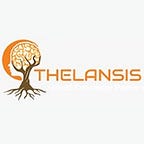Chronic Rhinosinusitis without Nasal Polyps (CRSsNP) — Market Outlook, Epidemiology, Competitive Landscape, and Market Forecast Report — 2023 To 2033
Chronic rhinosinusitis without nasal polyposis (CRSsNP) manifests as the persistence of at least two out of four key symptoms over a period of 12 weeks or more: nasal obstruction, anterior or posterior nasal discharge, reduction or loss of smell, and facial pain/pressure/fullness. Additional symptoms may include rhinorrhea and facial discomfort. Conditions predisposing individuals to CRSsNP comprise acute rhinosinusitis, often triggered by viral respiratory infections, as well as allergic and non-allergic rhinitis, asthma, bronchitis, pneumonia, gastroesophageal reflux disease, adenotonsillitis, sleep apnea, and otitis media. Moreover, the likelihood of allergic conjunctivitis, atopic dermatitis, asthma, urinary tract infections, and skin/soft tissue infections increases with a diagnosis of CRSsNP. Traditionally, CRSsNP, typically associated with microbacterial colonization, has been presumed to arise from unresolved or insufficiently treated acute rhinosinusitis. However, this scenario is uncommon, as most cases of acute rhinosinusitis stem from viral respiratory infections that typically resolve without intervention. Therefore, when CRSsNP is present, various underlying predisposing factors should be considered, including primary and secondary immunodeficiencies such as common variable immunodeficiency and HIV, genetic anomalies like cystic fibrosis (CF), and mucociliary disorders such as ciliary dyskinesia. For instance, HIV-infected individuals exhibit a heightened prevalence of CRS, likely attributable to diminished cellular and humoral immunity — thirty-six percent of patients with common variable immunodeficiency present with CRSsNP. Additionally, some individuals with both CRS phenotypes have low serum IgA levels, with 6.2% exhibiting selective IgA deficiency. However, the connection between selective IgA deficiency and both types of chronic rhinosinusitis remains uncertain. CRSsNP is characterized by fibrosis, thickening of the basement membrane, and hyperplasia of goblet cells. Elevated levels of TGF-β are observed in the early stages of CRSsNP, while pro-inflammatory neutrophils and Th1 markers, along with the T cell profile, remain unaffected. The remodeling process appears to proceed concurrently with inflammation during the initial stages of CRSsNP, indicating its pivotal role in the condition’s onset. Mucus secretion, goblet cell hyperplasia, and glandular hyperplasia represent hallmark features of upper airway remodeling in CRSsNP. The primary objectives of medical treatment for CRS involve reducing mucosal swelling, improving sinus drainage, and eliminating infections. This typically necessitates a combination of topical or oral glucocorticoids, oral antibiotics, and nasal saline irrigation. Although the role of bacteria in chronic sinusitis pathogenesis remains unclear, prompt diagnosis and appropriate treatment often alleviate symptoms in most patients, with many achieving a cure. Functional endoscopic sinus surgery (FESS) may be recommended when medical therapy proves ineffective.
Thelansis’s “Chronic Rhinosinusitis without Nasal Polyps (CRSsNP) Market Outlook, Epidemiology, Competitive Landscape, and Market Forecast Report — 2023 To 2033” covers disease overview, epidemiology, drug utilization, prescription share analysis, competitive landscape, clinical practice, regulatory landscape, patient share, market uptake, market forecast, and key market insights under the potential Chronic Rhinosinusitis without Nasal Polyps (CRSsNP) treatment modalities options for eight major markets (USA, Germany, France, Italy, Spain, UK, Japan, and China).
KOLs insights of Chronic Rhinosinusitis without Nasal Polyps (CRSsNP) across 8 MM market from the centre of Excellence/ Public/ Private hospitals participated in the study. Insights around current treatment landscape, epidemiology, clinical characteristics, future treatment paradigm, and Unmet needs.
Chronic Rhinosinusitis without Nasal Polyps (CRSsNP) Market Forecast Patient Based Forecast Model (MS. Excel Based Automated Dashboard), which Data Inputs with sourcing, Market Event, and Product Event, Country specific Forecast Model, Market uptake and patient share uptake, Attribute Analysis, Analog Analysis, Disease burden, and pricing scenario, Summary, and Insights.
Thelansis Competitive Intelligence (CI) practice has been established based on a deep understanding of the pharma/biotech business environment to provide an optimized support system to all levels of the decision-making process. It enables business leaders in forward-thinking and proactive decision-making. Thelansis supports scientific and commercial teams in seamless CI support by creating an AI/ ML-based technology-driven platform that manages the data flow from primary and secondary sources.
